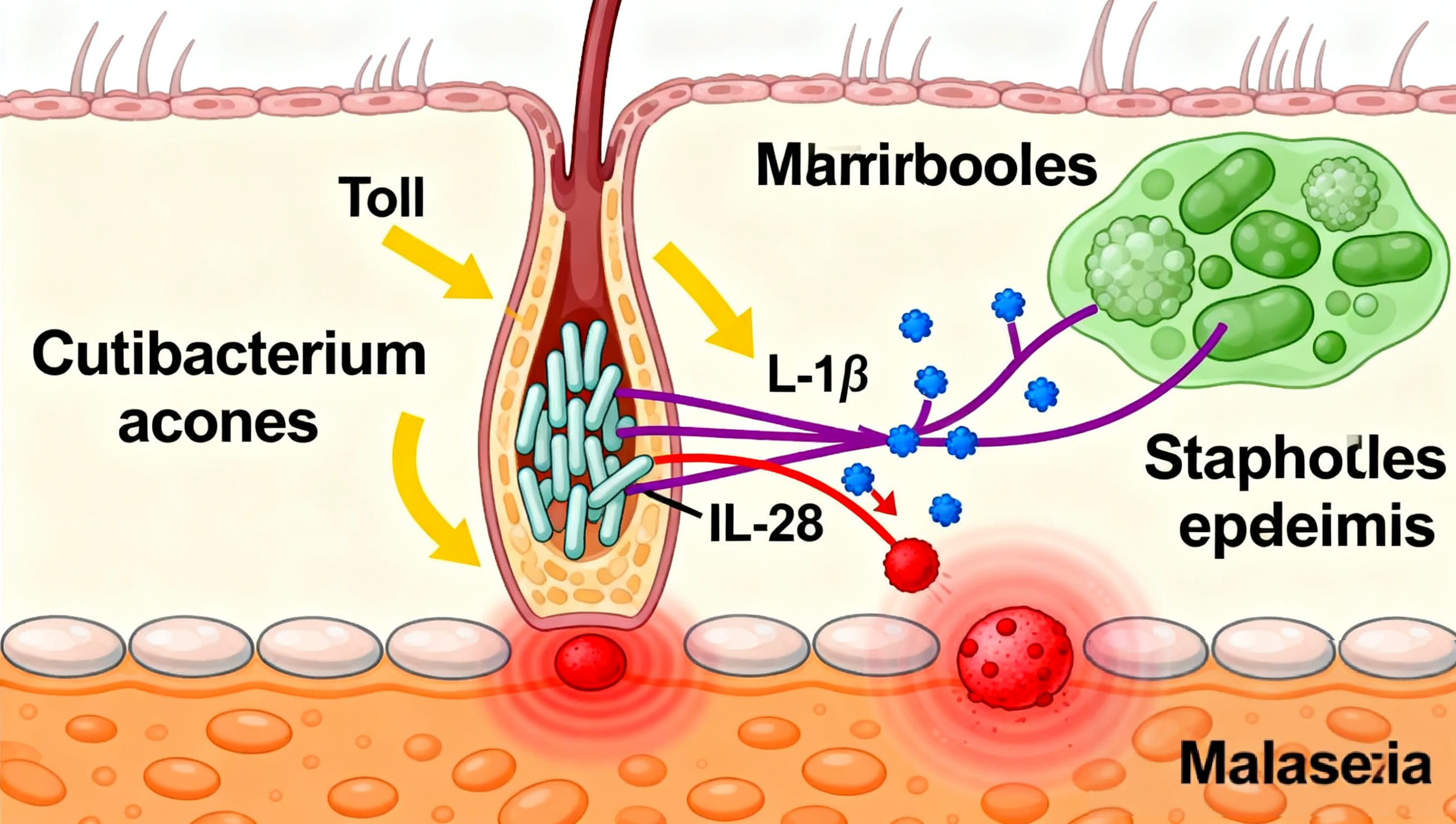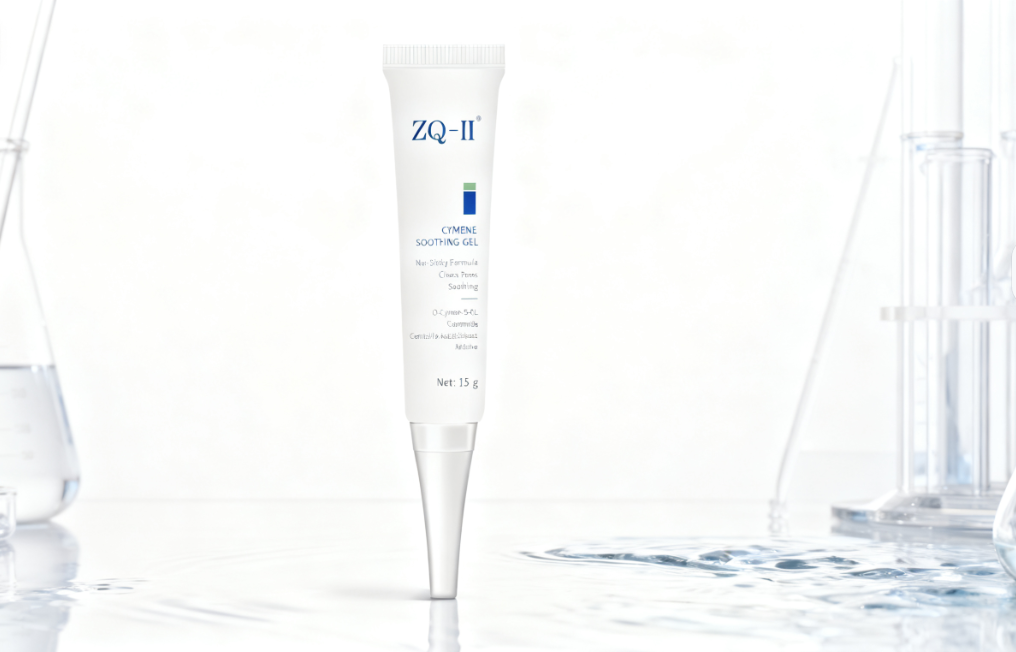Understanding Acne Through the Lens of Skin Microbiota Dysbiosis
Healthy skin maintains a delicate balance of microorganisms—collectively known as the skin microbiota—that support barrier integrity, immune defense, and environmental protection. This dynamic ecosystem includes commensal bacteria, yeasts, and transient microbes that coexist harmoniously under normal conditions. However, when this equilibrium is disrupted, a condition known as skin microbiota dysbiosis occurs, often serving as a crucial trigger in the development of acne vulgaris. Dysbiosis alters the interactions between microbes and the skin’s immune system, resulting in inflammation, excess sebum production, and barrier dysfunction that ultimately manifest as acne lesions.
Microbial Imbalance and Acne Pathogenesis
Among the microorganisms involved in acne development, Cutibacterium acnes (C. acnes) plays a leading role. As a gram-positive anaerobic bacterium, it thrives in the oxygen-deprived, sebum-rich environment of the pilosebaceous unit. Under certain conditions, C. acnes overproliferates and activates inflammatory pathways through Toll-like receptors and inflammasomes, releasing cytokines such as IL-1β and IL-8 that promote the formation of comedones and papules. Alongside this, Staphylococcus epidermidis (S. epidermidis)—a common skin commensal—can transform into a pathogenic species. When environmental or metabolic stress occurs, S. epidermidis forms biofilms and synergizes with C. acnes, aggravating inflammation and contributing to persistent or treatment-resistant acne. Another key player is Malassezia, a genus of lipophilic yeasts that normally inhabit the skin surface. Excessive sebum secretion or impaired barrier function can lead to Malassezia overgrowth, resulting in folliculitis or acneiform eruptions, especially in warm and humid environments.

Consequences of Dysbiosis on Skin Health
When the microbiota loses its balance, a cascade of pathological changes follows. The skin barrier becomes compromised as ceramide levels drop and transepidermal water loss (TEWL) increases, leaving the surface vulnerable to dryness and irritation. Dysregulated sebum production and altered enzymatic activity lead to clogged pores and an oily appearance, while ongoing inflammation accelerates the progression to more severe acne or other inflammatory dermatoses such as seborrheic dermatitis and rosacea. Moreover, dysbiosis heightens immune reactivity, delays wound healing, and disrupts pH homeostasis, all of which contribute to prolonged redness, scarring, and uneven skin texture. Therefore, maintaining a balanced microbiome is essential not only for preventing acne but also for ensuring healthy, resilient, and well-functioning skin.
O-Cymen-5-OL: Targeted Antibacterial Care for Acne-Prone Skin
Addressing acne effectively requires controlling microbial overgrowth without damaging beneficial flora. O-Cymen-5-OL, a derivative of thymol, offers a scientifically advanced solution. As a broad-spectrum antibacterial and antifungal agent, it selectively inhibits acne-related pathogens—such as C. acnes, S. epidermidis, and Malassezia—while preserving the protective balance of commensal organisms. By suppressing bacterial virulence and biofilm formation, O-Cymen-5-OL reduces inflammatory responses and helps restore microbiome harmony. Unlike traditional antibiotics, it poses minimal risk of microbial resistance or microbiome exhaustion, making it ideal for long-term use in acne-prone skin.
ZQ-II Acne Gel: Balancing Microbiota and Strengthening the Skin Barrier
Powered by O-Cymen-5-OL and Ceramide NP, ZQ-II Acne Gel embodies a dual-action approach that targets both microbial dysbiosis and barrier repair. While O-Cymen-5-OL regulates harmful bacterial growth and calms inflammation, Ceramide NP replenishes essential lipids in the stratum corneum, reducing TEWL and reinforcing the skin’s natural defense system. Together, these ingredients not only reduce active lesions but also help prevent recurrence by normalizing sebum secretion and supporting a healthier microbiome environment. With consistent use two to three times daily, ZQ-II Acne Gel assists in clearing blemishes, restoring microbial equilibrium, and maintaining smooth, hydrated, and resilient skin.

A Holistic Approach to Acne Management
The relationship between the skin microbiome and acne underscores the need for treatments that go beyond surface-level cleansing or temporary antibacterial action. By combining microbiota regulation with barrier restoration, ZQ-II Acne Gel offers a modern, scientifically informed solution for acne-prone skin. Its formulation harnesses the precision of O-Cymen-5-OL and the protective strength of Ceramide NP to address the root causes of inflammation while preserving the skin’s natural balance—supporting a clearer, calmer, and healthier complexion over time.


